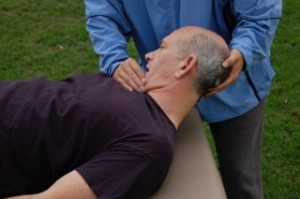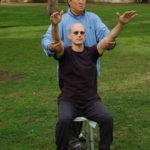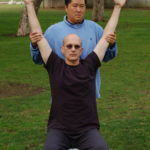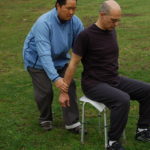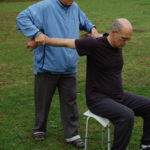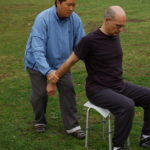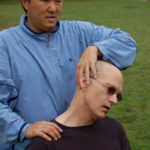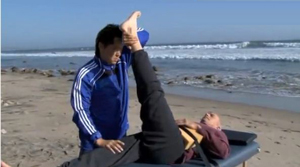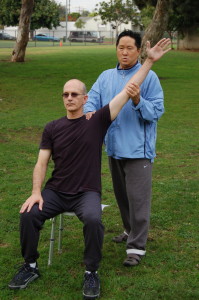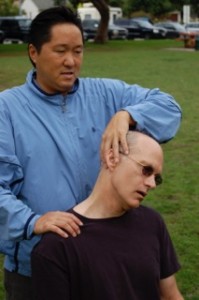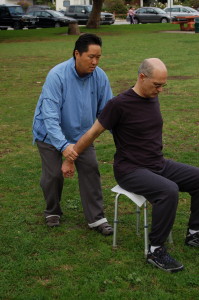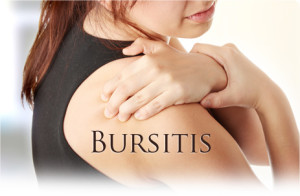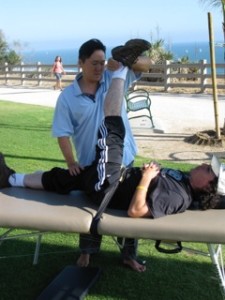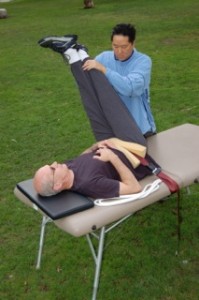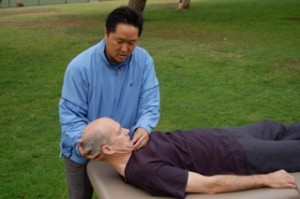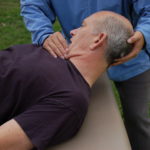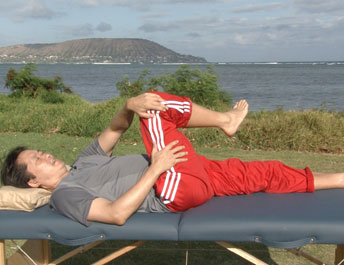People searching for Alzheimer’s care in Honolulu need to know about Active Isolated Stretching therapy as an alternative to sending a family member to an assisted living facility. Alzheimer’s disease problems, like memory loss, can be significantly improved by unwinding the muscles of the upper body and neck. Virtually every person afflicted with Alzheimer’s disease has muscular rigidity in the neck. Researchers are unsure why muscular rigidity occurs in Alzheimer’s disease patients, however rigidity of the neck muscles interferes with the circulation of blood to the brain through the carotid and vertebral arteries. A treatment that restores blood flow to the carotid and vertebral arteries can greatly improve memory loss and mental fogginess in Alzheimer’s patients. Active Isolated Stretching is that treatment in Honolulu, Hawaii.
Alzheimer’s care in Honolulu
According to Carol Turkington, author of The Encyclopedia Of Alzheimer’s Disease, Alzheimer’s disease is caused by a degeneration of brain cells which results in those cells being unable to communicate with one another and eventually dying off. Scientists are unsure what triggers brain cell degeneration typically found in Alzheimer’s patients.
Circulation to the brain is vital for cognitive function
Brain cells need nutrients and oxygen to function properly. Through blood circulation, the brain receives the necessary nutrients and oxygen. If the brain does not receive adequate blood circulation, then cognitive abilities of the brain can decline: memory decreases, concentration falls off, decision-making is impaired, even mood swings and violent behavior can result. Why? Because the brain is lacking fuel. There are other factors for Alzheimer’s and dementia patients, namely, the presence of plaques, tangles, and inflammation in the brain. These factors may or may not be affected by Active Isolated Stretching. However, muscular rigidity in the neck is commonplace in Alzheimer’s patients. And muscular rigidity in the neck muscles causes memory loss and mental decline in Alzheimer’s patients because it decreases circulation to the brain. This aspect of Alzheimer’s disease can be greatly improved through Active Isolated Stretching treatment. Conventional medical procedure does not examine muscular rigidity as a contributing factor in Alzheimer’s and dementia cases, which is why so few people know of AIS therapy as an effective treatment for Alzheimer’s disease.
Inflexibility in neck muscles affects circulation to the brain
The neck muscles lie above the arteries that bring blood flow to the brain. The principal pathway of circulation to the brain are the carotid and vertebral arteries. The carotid artery delivers the majority of blood flow to the brain. And the carotid artery is directly underneath a major neck muscle: the sternocleidomastoid. A shortened sternocleidomastoid neck muscle is likely to be inflamed. Inflammation in the sternocleidomastoid muscle can place pressure onto the carotid artery, limiting circulation from reaching the brain.
Another critical muscle group to correct are the scalene muscles of the neck. As the scalene muscles become inflexible, the head is pulled forward and the jaw drops downward. Circulation to the brain is upward travel from the heart. If the head juts forward, then posture is distorted. Compromised posture can cause blockages of blood flow to the brain. Inflammation in the sternocleidomastoid and scalene muscles can also cause blockages of blood flow in the carotid artery.
Muscular inflammation among Alzheimer’s disease patients
A common characteristic of Alzheimer’s and dementia is chronic muscular inflammation. This occurs throughout the body. And because it occurs in the neck, a treatment that unwinds muscular tension in the upper body will greatly improve the overall condition of that person. Addressing muscular rigidity is not the only cause of Alzheimer’s or dementia, but it is one significant characteristic of the disease. If muscular rigidity is optimally addressed, the Alzheimer’s or dementia sufferer will greatly improve their overall state. The key manner in which Active Isolated Stretching therapy helps an Alzheimer’s or dementia sufferer improve their life is by unwinding muscular rigidity in the neck which will improve fuel to the brain. Fuel to the brain is blood flow to the brain. Improved blood flow brings more nutrients and oxygen to the brain, which improves overall mental function. Areas of improvement: mental clarity; memory; cessation/reduction of mood swings, irritability, violence.
Alzheimer’s Treatment
As Alzheimer’s and dementia problems begin for one person, that person’s entire family is affected. Family members begin considering hiring an in-home caregiver or changing their schedule to provide supervision for their afflicted. This can lead to sending an elderly person to a supervised day care facility and in later stages, sending that person to a nursing home. According to Joy Glenner, author of When Your Loved One Has Dementia, more than 50% of nursing home admissions are due to Alzheimer’s disease. Active Isolated Stretching can help put a halt to this downward spiral. Individuals that receive treatment may regain their abilities to the level that they can be discharged from a retirement home. Rather than letting a person continually slip into mental decline and depression, Active Isolated Stretching offers hope to return to independence. To take back what has been lost. This is the greatness of Active Isolated Stretching: a return to life.
